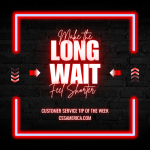Personnel in a college athletics department were interviewed about the low attendance this season for basketball games. They discussed the reasons for it. ‘It’s the economy’s fault.’ Valid reason. But the student attendance is down, too. ‘It’s the players fault for not being more a part of the student body.’ Possibly valid. ‘It’s also the student leadership’s fault – they’re not doing a good enough job of getting the students excited about basketball.’ Possibly valid.
What’s interesting about these three reasons discussed is that none of them were the fault of the athletics department. Or put more politely, none of these were directly controllable by the athletics department.
So this implies one of two things. Either the athletics department has no impact whatsoever on attendance or they have an impact, but there’s nothing wrong with what they’re doing. They’re perfect.
This is the problem in organizations where the product is the most important thing. In sports, it’s the play on the court. In hospitals, it’s the clinical care. Too many people in these types of organizations feel that the product is not only the most important thing; it’s the only thing.
If this were true, why do athletics departments have “fan relations” positions? Why do pro sports team have “season ticket holder account representatives?” In hospitals, why are employees taught customer service skills?
Why? Because there should be some impact, some value, some effect from the efforts of these people.
If you’re in an industry where you don’t control the ultimate product, focus instead on what you DO control. And take more ownership over making an impact than did this one college athletics department.
Interested in improving your company’s customer service? See more information at: http://www.cssamerica.com/





















